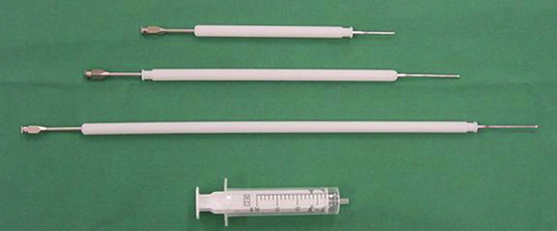
Hajurka J., Stefanizzi E. Inseminácia súk – minulosť a súčasnosť. Veterinářství 2024;74(12):653-659.
SOUHRN
Hoci prvú úspešnú insemináciu suky vykonal taliansky kňaz Spallanzani koncom XVIII. storočia, ale na dlhé obdobie sa v tom nepokračovalo. Až koncom 50. rokov 20. storočia boli publikované práce o insemiácii súk čerstvým ejakulátom a v 60. rokoch 20. storočia to bolo požitie mrazeného a rozmrazeného semena. Zavedenie inseminácie súk do chovateľskej praxe nastalo v 90. rokoch 20. storočia predovšetkým v USA a severských krajinách Európy. Hlavnými dôvodmi zavedenia inseminácie súk do praxe sú odlišnosti reprodukčnej fyziológie súk a nízka preživateľnosť spermií psa po ich zmrazení. V súčasnosti, v dôsledku zavádzania reprodukčnej technológie do praxe chovu psov sa insemiácia vykonáva predovšetkým čerstvým alebo zmrazeným ejakulátom po ich príslušnom technologickom spracovaní. Zlé načasovanie pripúšťania/inseminácie súk je najčastejšou príčinou zlyhania gravidity. Endoskopická transcervikálna inseminácia je úspešnejšia, ako ostatné spôsoby, najmä s použitím zmrazovaného a rozmrazeného semena. Chirurgický spôsob intrauterinnej inseminácie je v súčasnosti v niektorých krajinách Európy (Nórsko, Švedsko, Spojené kráľovstvo) a v Austrálii zakázaný.*
Klíčová slova: vaginálna inseminácia, transcervikálna inseminácia, história inseminácie súk, suky
SUMMARY
Although the first successful insemination of a bitch was performed by the Italian priest Spallanzani at the end of the XVIII century, but it was not continued for a long time. It was not until the end of the 1950s that works were published on the insemination of bitches with fresh ejaculate, and in the 1960s it was the use of frozen and thawed semen. The introduction of insemination of bitches into breeding practice occurred in the 1990s, primarily in the USA and the Nordic countries of Europe. The main reasons for introducing the insemination of bitches into practice are the differences in the reproductive physiology of bitches and the low viability of dog sperm after freezing. Currently, as a result of the introduction of reproductive technology into the practice of dog breeding, insemination is primarily performed with fresh or frozen ejaculate after their technological processing. Bad timing of mating/insemination of bitches is the most common cause of pregnancy failure. Endoscopic transcervical insemination is more successful than other methods, especially with the use of frozen and thawed semen. The surgical method of intrauterine insemination is currently prohibited in some European countries (Norway, Sweden, United Kingdom) and in Australia.